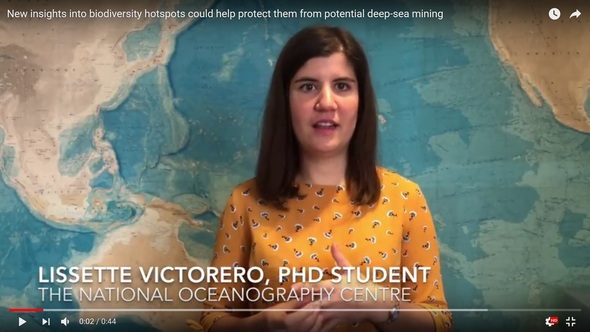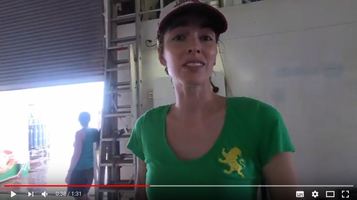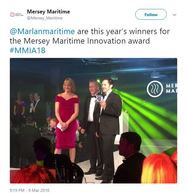 New insights into animal patterns around extinct submarine volcanoes could inform measures used to protect marine ecosystems from human activities, such as trawling and deep-sea mining. These insights were published earlier this week in Nature Scientific Reports, and show that the structure of marine life communities depends on depth and small-scale features on the sea floor.
Read more about this on our website or watch a video of the lead author, NOC PhD student Lissette Victorero, talking through the importance of her research here.  On Thursday we marked International Women's Day by celebrating a cross section of the talented women who make up 34% of the NOC, including our Director of Science and Technology, Prof Angela Hatton and Master of the RRS Discovery, Capt Jo Cox. See their career paths and thoughts on equality and diversity over on our website. We also shared a great video of Dr Ale Sanchez-Franks on board RRS James Cook who's part of the current ORCHESTRA expedition. Watch it over on YouTube and follow the expedition @JC159_24S on Twitter for more videos of women in science. If you're looking for your next exciting career opportunity then take a look at our current vacancies. We have roles in science, technical and support all available. |
 This week an article in Nature highlighted the importance of long-term records, such as the NOC's Global Extreme Sea Level Analysis (GESLA) database of sea level information from tide gauges, used for forecasting the risk of coastal flooding events. This database contains the largest collection of such worldwide information. It shows that since 1970 the magnitude and frequency of extreme sea levels have increased throughout the world. GESLA now contains 1,355 records from around the world, most dating from the second half of the twentieth century. However, the article points out that is not long enough for researchers who want to improve the long-term statistics. A rule of thumb holds that the frequency of events can be extrapolated up to four times as far into the future as the observational record reaches backward. A few decades of data won't be sufficient to inform forecasts for a 10,000-year flood event, as is required for some communities and for sensitive infrastructure such as nuclear power plants, and for these additional modelling studies are required. Nevertheless, GESLA provides the best possible information on present day extreme sea levels on which such studies can be based. |
 Congratulations to our business partner Marlan Maritime Technologies on picking up the gong for the hotly contested 'Innovation' category at the prestigious Mersey Maritime Awards 2018 this week. The NOC has been working with Marlan for the past few years on the hydrographic radar system that secured the award, and you can expect to hear lots more from the team in the near future. Meanwhile, find out more about how Marlan are delivering innovative maritime solutions at their website http://marlan-tech.co.uk |
|
No comments:
Post a Comment